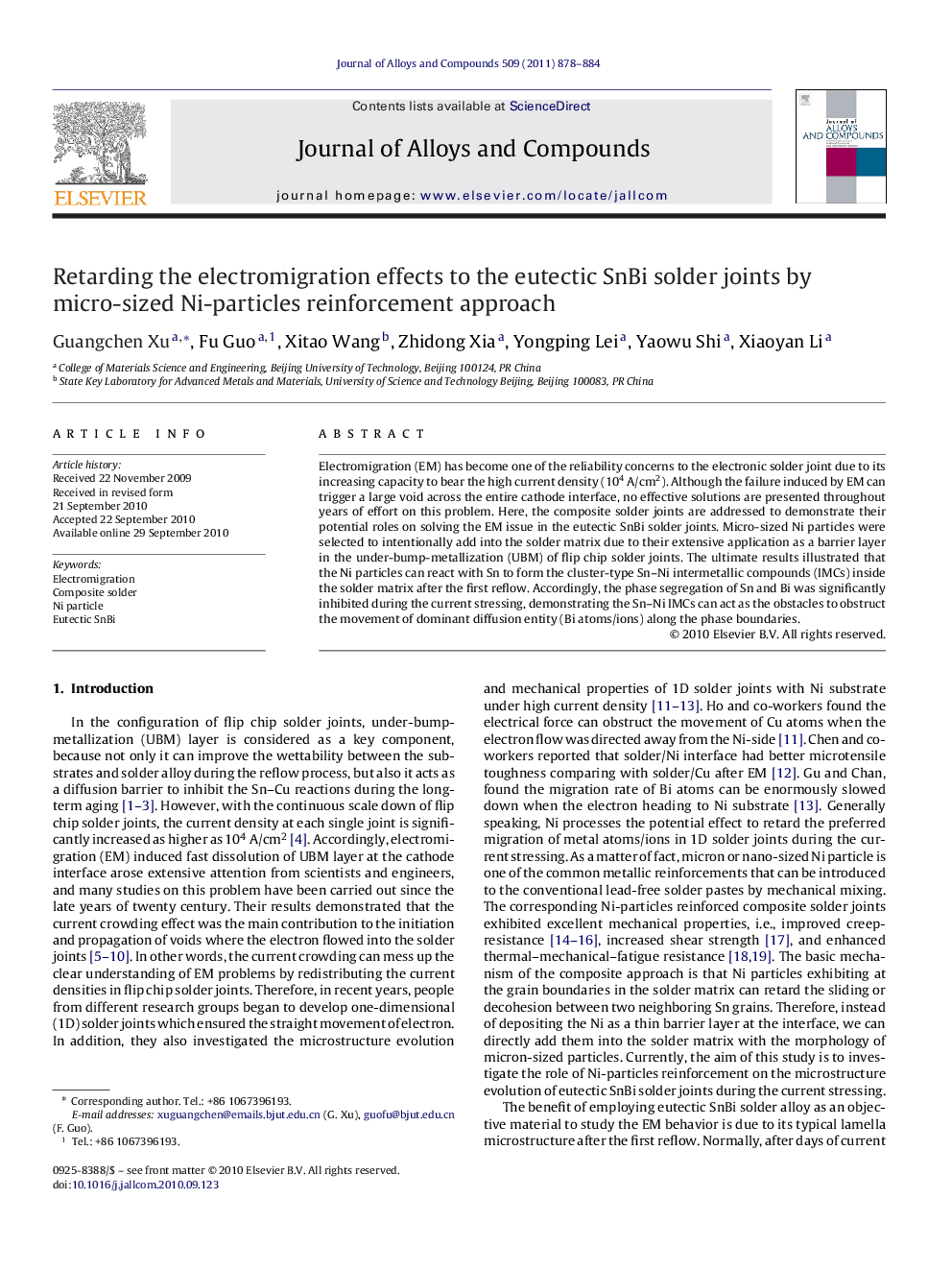| Article ID | Journal | Published Year | Pages | File Type |
|---|---|---|---|---|
| 1618841 | Journal of Alloys and Compounds | 2011 | 7 Pages |
Electromigration (EM) has become one of the reliability concerns to the electronic solder joint due to its increasing capacity to bear the high current density (104 A/cm2). Although the failure induced by EM can trigger a large void across the entire cathode interface, no effective solutions are presented throughout years of effort on this problem. Here, the composite solder joints are addressed to demonstrate their potential roles on solving the EM issue in the eutectic SnBi solder joints. Micro-sized Ni particles were selected to intentionally add into the solder matrix due to their extensive application as a barrier layer in the under-bump-metallization (UBM) of flip chip solder joints. The ultimate results illustrated that the Ni particles can react with Sn to form the cluster-type Sn–Ni intermetallic compounds (IMCs) inside the solder matrix after the first reflow. Accordingly, the phase segregation of Sn and Bi was significantly inhibited during the current stressing, demonstrating the Sn–Ni IMCs can act as the obstacles to obstruct the movement of dominant diffusion entity (Bi atoms/ions) along the phase boundaries.
Research highlights▶ We used a revised solder joints with one-dimension geometry that can help us to investigate the true failure mechanisms of solder joints induced by EM. ▶ One of possible solutions to inhibit the EM effect to solder joint can be achieved by adding micro- or nano-sized metal particles into it. ▶ Micro-sized Ni particles were selected as the reinforcement to retard the phase segregation in the eutectic SnBi solder joints under high current density (104 A/cm2). It has been approved in this study that Ni particles can act as obstacles to obstruct the fast diffusion channel along the phase boundaries in the eutectic SnBi system.
